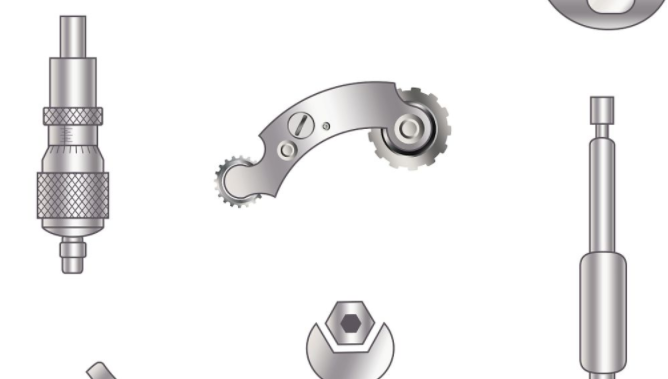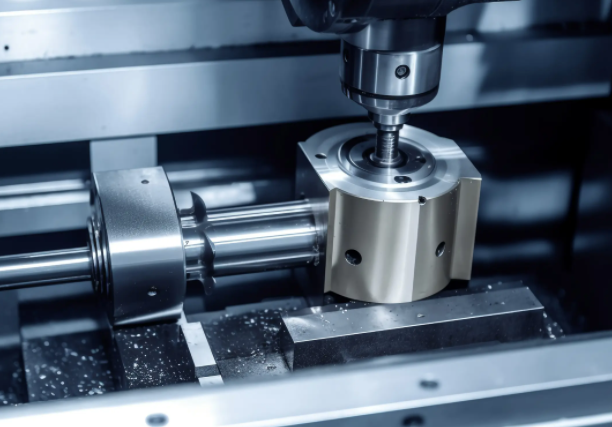Micro CNC machining is a specialized manufacturing process that uses computer numerical control (CNC) systems to produce small, intricate parts with high precision. This technology is critical in industries such as aerospace, medical devices, electronics, and automotive, where components often require tight tolerances and complex geometries. This guide provides a systematic overview of micro CNC machining, detailing its processes, technical parameters, material considerations, and applications, with a focus on clarity and technical accuracy.
Understanding Micro CNC Machining
Micro CNC machining refers to the use of CNC machines to fabricate parts with features typically measured in micrometers (µm). Unlike conventional CNC machining, which handles larger components, micro CNC machining focuses on producing parts with dimensions often smaller than 1 mm. The process involves subtractive manufacturing, where material is removed from a workpiece using precision tools controlled by computer programs. Key processes include micro milling, micro turning, micro drilling, and micro electrical discharge machining (EDM).
The precision of micro CNC machining is achieved through advanced CNC systems, high-speed spindles, and specialized tooling. These systems use multi-axis configurations, typically 3-axis or 5-axis, to achieve complex geometries. The programming relies on CAD/CAM software to translate designs into machine instructions, ensuring accuracy down to ±0.001 mm in some cases.
Key Processes in Micro CNC Machining
Micro CNC machining encompasses several processes, each suited to specific applications. Below is a detailed breakdown of the primary methods used.
Micro Milling
Micro milling uses rotating cutting tools to remove material from a workpiece, creating features such as slots, pockets, and contours. Tools with diameters as small as 0.1 mm are common, and high-speed spindles (up to 100,000 RPM) ensure clean cuts. This process is ideal for producing microchannels, microfluidic devices, and precision molds. Key parameters include:
- Tool Diameter: 0.1–1 mm
- Spindle Speed: 20,000–100,000 RPM
- Feed Rate: 0.01–0.5 mm/min
- Depth of Cut: 0.005–0.05 mm
Micro Turning
Micro turning involves rotating the workpiece while a stationary cutting tool shapes it, typically for cylindrical components like micro shafts or pins. This process is used in applications requiring high concentricity, such as optical components. Parameters include:
- Workpiece Diameter: 0.5–10 mm
- Spindle Speed: 5,000–50,000 RPM
- Feed Rate: 0.01–0.2 mm/rev
- Surface Finish: Ra 0.1–0.4 µm
Micro Drilling
Micro drilling creates small, precise holes, often for applications like printed circuit boards (PCBs) or fuel injectors. Drills as small as 0.03 mm in diameter are used, with high spindle speeds to minimize burr formation. Parameters include:
- Drill Diameter: 0.03–1 mm
- Spindle Speed: 30,000–80,000 RPM
- Feed Rate: 0.005–0.1 mm/min
- Hole Depth: Up to 10x drill diameter
Micro EDM
Micro electrical discharge machining (EDM) uses controlled electrical discharges to erode material, ideal for hard metals or intricate shapes. It is widely used in mold making and aerospace components. Key parameters include:
- Electrode Diameter: 0.1–0.5 mm
- Pulse Duration: 1–10 µs
- Current: 0.5–5 A
- Surface Finish: Ra 0.05–0.2 µm
Material Considerations for Micro CNC Machining
Material selection is critical in micro CNC machining due to the small scale and precision requirements. Common materials include metals, plastics, and composites, each with specific properties affecting machinability.
| Material | Properties | Applications | Machining Considerations |
|---|---|---|---|
| Aluminum | Lightweight, corrosion-resistant, good thermal conductivity | Aerospace components, electronic housings | Soft, prone to burrs; requires sharp tools |
| Stainless Steel | High strength, corrosion-resistant | Medical implants, surgical tools | Harder to machine, generates heat |
| Titanium | High strength-to-weight ratio, biocompatible | Aerospace, medical devices | Low thermal conductivity, tool wear |
| PEEK | Chemical resistance, high temperature stability | Medical components, insulators | Requires precise cooling to avoid melting |
Technical Parameters and Tolerances
Achieving precision in micro CNC machining requires strict control of parameters and tolerances. Tolerances as tight as ±0.001 mm are achievable with advanced machines, but they increase production time and cost. Below are standard parameters for micro CNC machining:
| Parameter | Typical Range | Impact |
|---|---|---|
| Tolerance | ±0.001–0.01 mm | Tighter tolerances increase machining time |
| Surface Roughness | Ra 0.05–0.4 µm | Lower Ra improves part performance |
| Spindle Speed | 20,000–100,000 RPM | Higher speeds reduce burrs but increase tool wear |
| Feed Rate | 0.005–0.5 mm/min | Lower rates improve precision, slow production |
Applications of Micro CNC Machining
Micro CNC machining is integral to industries requiring high-precision components. Key applications include:
- Aerospace: Micro turbines, fuel injectors, and sensor housings require tight tolerances and lightweight materials like titanium and aluminum.
- Medical Devices: Surgical tools, implants, and microfluidic devices demand biocompatible materials and precision.
- Electronics: Micro CNC machining produces PCB components, connectors, and microchip housings with fine details.
- Automotive: Fuel injection nozzles and micro gears benefit from the precision and durability of micro CNC machining.
- Optics: Lenses and mirrors require smooth surfaces and precise geometries achievable through micro turning and milling.
Limitations and Considerations
While micro CNC machining offers unmatched precision, certain limitations must be addressed to ensure optimal results. These include:
- Tool Wear: Small tools are prone to rapid wear, especially when machining hard materials like titanium or stainless steel. Regular tool inspection and replacement are necessary.
- Thermal Effects: Heat generated during machining can cause material deformation, particularly in plastics or thin-walled parts. Coolant systems and low feed rates mitigate this issue.
- Vibration: High-speed machining can induce vibrations, affecting surface finish and accuracy. Stable machine setups and vibration-damping materials are critical.
- Cost: Tighter tolerances and smaller features increase machining time and tool costs, impacting overall production expenses.
Best Practices for Micro CNC Machining
To achieve optimal results in micro CNC machining, manufacturers should follow these best practices:
- Tool Selection: Use high-quality, sharp tools with appropriate coatings (e.g., diamond or carbide) to minimize wear and improve surface finish.
- Machine Calibration: Regularly calibrate CNC machines to maintain accuracy, especially for multi-axis systems.
- CAD/CAM Optimization: Ensure designs are optimized for manufacturability, avoiding overly complex geometries that increase machining time.
- Material Testing: Conduct test runs on sample materials to determine optimal parameters before full production.
- Quality Control: Use precision measurement tools, such as laser interferometers or CMMs, to verify tolerances and surface finish.

Conclusion
Micro CNC machining is a cornerstone of modern precision manufacturing, enabling the production of small, complex parts with exceptional accuracy. By understanding its processes, material considerations, technical parameters, and limitations, manufacturers can leverage this technology to meet the demands of industries like aerospace, medical, and electronics. Adhering to best practices ensures high-quality outcomes, making micro CNC machining a reliable choice for intricate component production.
